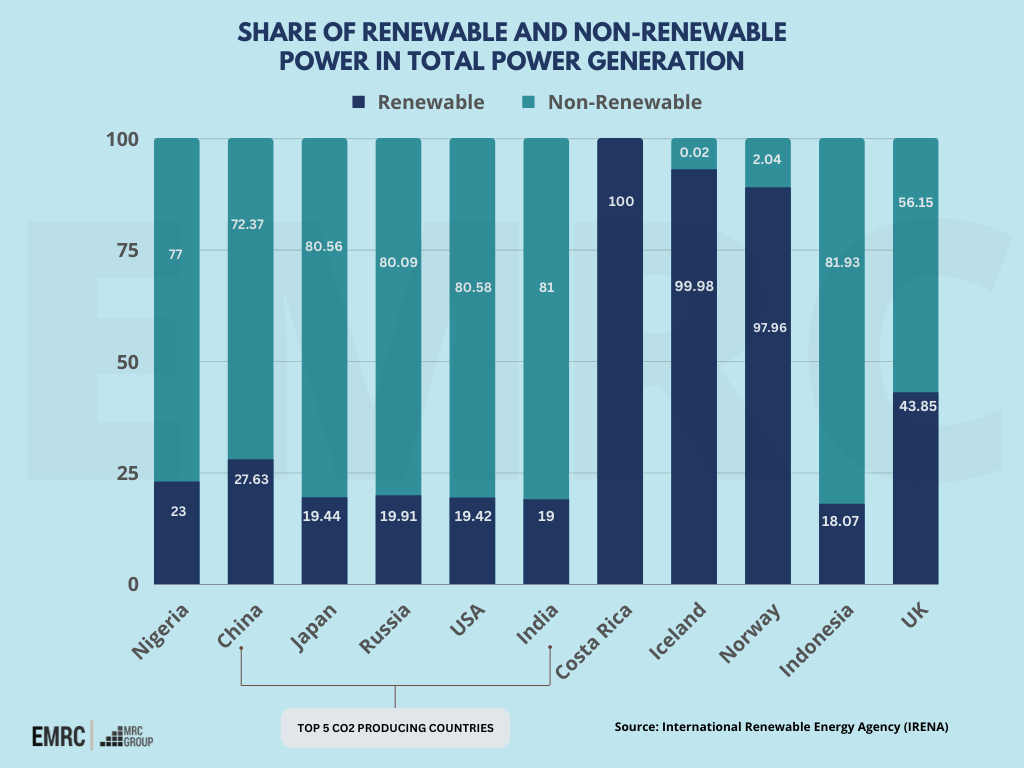
Sector Emissions from Power Generation
Historically, fossil fuels have been the primary energy source for power generation, but they release high levels of harmful greenhouse gases into the environment.
As the global economy recovers from COVID-19, many countries have turned to coal to fuel their recovery, releasing 36.3 billion tonnes of CO2 from the energy sector alone.
As a result, global greenhouse gas emissions in 2021 were among the highest on record.
Within the energy sector, the heat and electricity generation sub-sector accounted for most emissions, and in 2019, it accounted for 27% of global greenhouse gas emissions.
Using clean and renewable energy sources like solar, wind, water and biofuels can reduce these emissions, and as the effects of climate change are imminent, we must transition to these energy sources sooner rather than later.
GOING
GREEN
Power Generation from Renewable Sources
The adoption of and transition to renewable energy keeps growing globally. Some countries can produce 100% of their energy needs from renewables and others, like Nigeria, are in the process of transitioning.

Nigeria’s Transition
In Nigeria, power is primarily generated using natural gas. It accounts for 84% of the country’s current 12.5GW generation capacity.
While the country intends to transition to renewable sources of power within the next 40 years, it will rely on natural gas as a transition fuel and keep its gas-fired power plants in operation even beyond 2060.
Transition Fuels
Transition fuels are low-carbon fossil fuels that ensure high levels of production while reducing emissions. They are used only during the transition process.
While they are economically beneficial, there are concerns that funding for renewable power projects could be diverted to transitional fuel projects, and may, in turn, delay the transition process altogether.
However, it is unlikely that this diversion will happen in Nigeria.
Renewable Power v Natural Gas in Nigeria
According to its Energy Transition Plan, Nigeria plans to increase its generation capacity to 42GW by 2030. However, 11GW of this capacity will be provided by backup generators, which are not technically part of the grid.
Consequently, Nigeria’s actual proposed generation capacity for 2030 is 31GW.
To attain 31GW installed generation capacity by 2030, Nigeria intends to increase its 1.5GW renewable generation capacity by 14.9GW, whereas it will only add 3.5GW to its current 11.5GW gas-fired fleet.
This signifies a firm intent to rapidly increase renewable generation capacity beyond conventional generation over the next eight years and in turn, makes it unlikely that funding for renewable power projects will be diverted to natural gas projects and slow down the transition process.
read more at EMRC Insights












